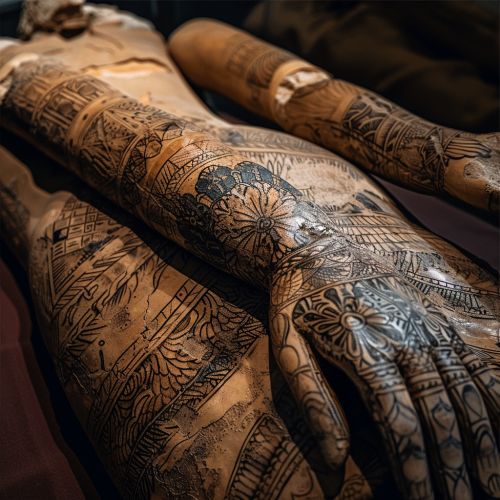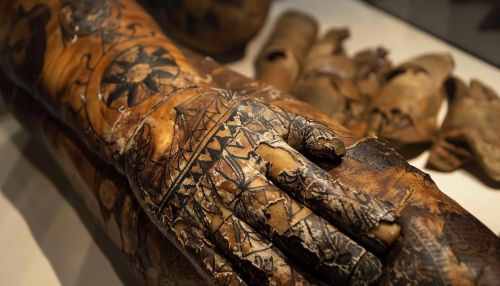Body Art
Introduction
Body art is a form of artistic expression that involves the human body as the primary medium. It encompasses a wide range of practices, including tattooing, body piercing, scarification, branding, body painting, and cosmetic surgery. Body art has been practiced by various cultures throughout history and continues to evolve with contemporary trends and technologies. This article delves into the history, techniques, cultural significance, and modern practices of body art.
History of Body Art
Ancient Practices
Body art has ancient origins, with evidence of tattooing and body piercing dating back thousands of years. The oldest known tattooed human remains are those of Ötzi the Iceman, a mummy from around 3300 BCE. Tattoos were also prevalent in ancient Egypt, as seen in the mummies of women from the Middle Kingdom (c. 2050–1650 BCE). In ancient Rome, tattoos were used to mark slaves and criminals.


Indigenous Cultures
Many indigenous cultures have rich traditions of body art. For example, the Maori of New Zealand are known for their intricate facial tattoos called moko. The Inuit people practiced tattooing as a rite of passage and for spiritual protection. In Africa, scarification has been used by various tribes, such as the Dinka and Nuer of South Sudan, to signify social status and tribal affiliation.
Modern Revival
The modern revival of body art began in the late 19th and early 20th centuries, with the re-emergence of tattooing in Western societies. Sailors, soldiers, and circus performers were among the first to popularize tattoos in the West. The 1960s and 1970s saw a resurgence of interest in body art, influenced by the counterculture movement and the rise of body modification communities.
Techniques and Methods
Tattooing
Tattooing involves inserting ink into the dermis layer of the skin to create permanent designs. Modern tattooing is typically done with an electric tattoo machine, which uses a needle to puncture the skin and inject ink. Traditional methods, such as hand-tapping and skin stitching, are still practiced in some cultures.
Body Piercing
Body piercing involves puncturing a part of the body to create an opening for jewelry. Common piercing sites include the ears, nose, eyebrows, lips, tongue, navel, and genitals. The practice requires sterilized equipment and proper aftercare to prevent infections and complications.
Scarification
Scarification is the process of creating raised scars on the skin by cutting, burning, or branding. The scars are often formed into intricate patterns and designs. This practice is deeply rooted in the cultural traditions of various African and Oceanic tribes.
Branding
Branding involves burning the skin with a heated object to create a permanent scar. It is similar to scarification but uses heat instead of cutting. Branding has historical associations with livestock marking and punishment but has been adopted by some body art enthusiasts for its unique aesthetic.
Body Painting
Body painting is a temporary form of body art that uses non-toxic paints to create designs on the skin. It is often used in performance art, festivals, and cultural ceremonies. Unlike tattoos, body painting can be easily washed off.
Cosmetic Surgery
Cosmetic surgery includes procedures that alter the body's appearance, such as rhinoplasty, breast augmentation, and liposuction. While primarily associated with aesthetic enhancement, some procedures have cultural or ritual significance in certain societies.
Cultural Significance
Rituals and Rites of Passage
In many cultures, body art is an integral part of rituals and rites of passage. For example, the Samoan tradition of pe'a tattooing marks the transition from adolescence to adulthood. Similarly, the Himba people of Namibia use ochre body paint as part of their daily grooming and cultural identity.
Social Status and Identity
Body art can signify social status, group membership, and personal identity. In ancient Rome, tattoos marked slaves and criminals, while in Japan, the Yakuza use full-body tattoos to signify their affiliation. In contemporary society, body art can be a form of self-expression and individuality.
Spiritual and Protective Functions
Many cultures believe that body art has spiritual and protective functions. For example, the Thai practice of Sak Yant involves sacred tattoos believed to grant protection and blessings. Similarly, the Inuit used tattoos to invoke spiritual guidance and protection.
Modern Trends and Innovations
Technological Advancements
Advancements in technology have significantly impacted body art practices. Laser tattoo removal, for instance, allows for the removal or modification of existing tattoos. New materials and techniques in body piercing and implants have expanded the possibilities for body modification.
Body Art in Popular Culture
Body art has become increasingly mainstream, with celebrities and public figures sporting tattoos and piercings. Television shows like "Ink Master" and "Tattoo Nightmares" have popularized tattoo culture. Social media platforms also play a significant role in the dissemination and evolution of body art trends.
Ethical and Health Considerations
The rise of body art has also brought ethical and health considerations to the forefront. Issues such as consent, cultural appropriation, and the regulation of body art practices are subjects of ongoing debate. Health concerns include the risk of infections, allergic reactions, and complications from unregulated procedures.
